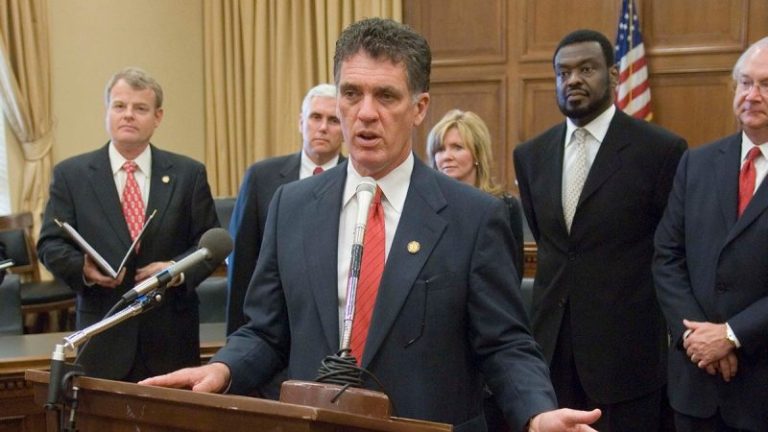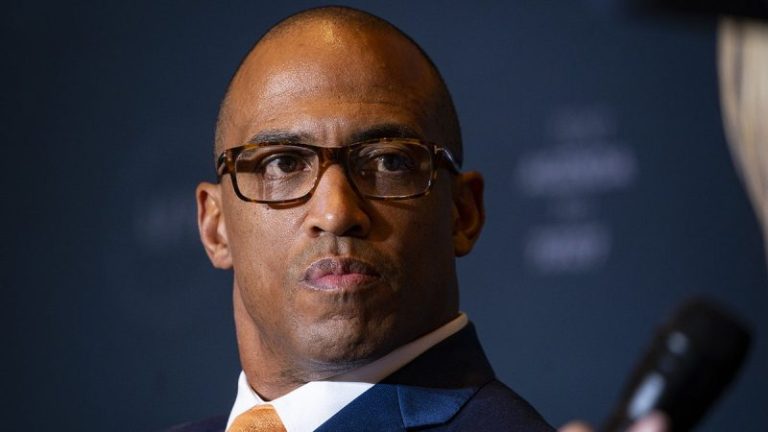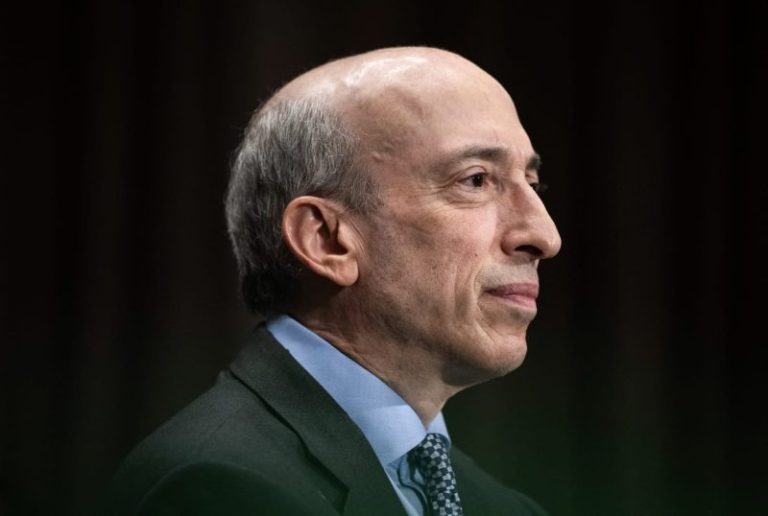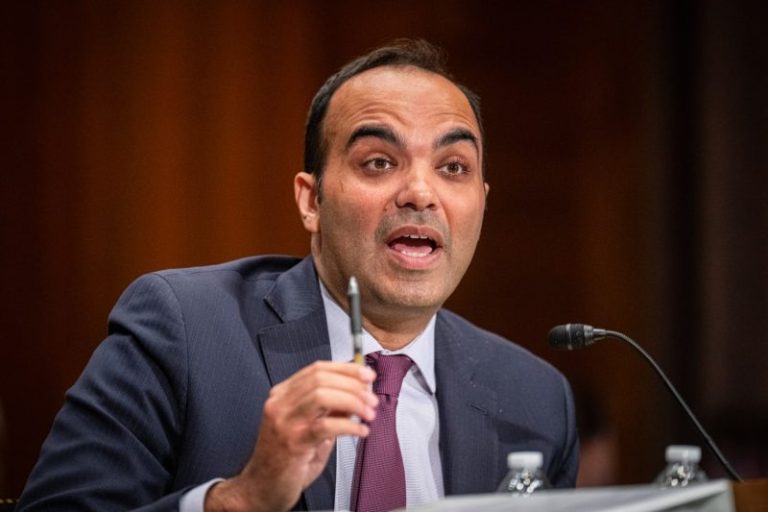A clearer picture emerged of who will serve in the Cabinet of America’s 47th President, with President-elect Trump assembling more of his top cabinet picks on Friday evening.
All of Trump’s Cabinet choices must be confirmed by the Senate, with the process set to begin in January. The confirmation process will be made easier by a 53-seat Republican majority, after GOP candidates flipped four seats in this election.
The president-elect chose a slew of key Trump supporters who assisted in his election.
Scott Bessent – Treasury Secretary
Scott Bessent, founder of Key Square Group, was chosen for the coveted post of Treasury secretary. Bessent was a key economic policy adviser and fundraiser for the Trump campaign.
‘Scott is widely respected as one of the World’s foremost International Investors and Geopolitical and Economic Strategists. Scott’s story is that of the American Dream,’ Trump said on Friday.
He has been an advocate for economic policies like lower taxes, spending restraint and deregulation that have long made up the core of the Republican Party’s platform, and has also been supportive of Trump’s use of tariffs in trade negotiations.
Russ Vought – Office of Management and Budget
On Friday, Trump tapped Russ Vought to lead the White House’s Office of Management and Budget (OMB). Vought served OMB director during Trump’s first term. He also served as deputy OMB director and acting director.
‘He did an excellent job serving in this role in my First Term – We cut four Regulations for every new Regulation, and it was a Great Success!’ Trump wrote on Truth Social.
Vought is a contributor to the Heritage Foundation’s Project 2025 and a close Trump ally.
Scott Turner – Secretary of the Department of Housing and Urban Development
Trump nominated Scott Turner as the secretary of the Department of Housing and Urban Development (HUD). Turner, who is chair of the Center for Education Opportunity and is a former professional football player, previously served as executive director of the White House Opportunity and Revitalization Council (WHORC).
‘Scott is an NFL Veteran, who, during my First Term, served as the First Executive Director of the White House Opportunity and Revitalization Council (WHORC), helping to lead an Unprecedented Effort that Transformed our Country’s most distressed communities,’ Trump said in a Friday statement. ‘Those efforts, working together with former HUD Secretary, Ben Carson, were maximized by Scott’s guidance in overseeing 16 Federal Agencies which implemented more than 200 policy actions furthering Economic Development. Under Scott’s leadership, Opportunity Zones received over $50 Billion Dollars in Private Investment!’
Turner, a former Texas state lawmaker, played nine seasons in the NFL as a member of the Washington Redskins, San Diego Chargers and the Denver Broncos.
Rep. Lori Chavez-DeRemer – Labor Secretary
Trump nominated Rep. Lori Chavez-DeRemer, R-Ore., on Friday for secretary of labor.
‘I am proud to hereby nominate Congresswoman Lori Chavez-DeRemer, from the Great State of Oregon, as United States Secretary of Labor,’ Trump wrote in an official statement. ‘Lori has worked tirelessly with both Business and Labor to build America’s workforce, and support the hardworking men and women of America. I look forward to working with her to create tremendous opportunity for American Workers, to expand Training and Apprenticeships, to grow wages and improve working conditions, to bring back our Manufacturing jobs. Together, we will achieve historic cooperation between Business and Labor that will restore the American Dream for Working Families.’
Chavez-DeRemer was first elected to Congress in 2022, and lost re-election in a close race against Democrat Janelle Bynum earlier this month. Her candidacy was backed by the Teamsters union.
Dr. Dave Weldon – Director of CDC
President-elect Trump announced that former Rep. Dr. Dave Weldon, R-Fla., is his pick as the director of the Centers for Disease Control and Prevention (CDC).
‘In addition to being a Medical Doctor for 40 years, and an Army Veteran, Dave has been a respected conservative leader on fiscal and social issues, and served on the Labor/HHS Appropriations Subcommittee, working for Accountability on HHS and CDC Policy and Budgeting,’ Trump said in the Friday evening announcement.
Trump said that Dr. Wedlon would restore trust in the agency and transparency.
Dr. Marty Makary – FDA commissioner
Trump on Friday nominated Dr. Marty Makary, a pancreatic surgeon at Johns Hopkins University, as commissioner of the Food and Drug Administration.
Makary is the chief of Islet Transplant Surgery at Johns Hopkins, according to the university’s website, and was a Fox News medical contributor.
‘FDA has lost the trust of Americans, and has lost sight of its primary goal as a regulator. The Agency needs Dr. Marty Makary, a Highly Respected Johns Hopkins Surgical Oncologist and Health Policy Expert, to course-correct and refocus the Agency,’ Trump said on Truth Social.
‘He will work under the leadership of Robert F. Kennedy Jr. to, among other things, properly evaluate harmful chemicals poisoning our Nation’s food supply and drugs and biologics being given to our Nation’s youth, so that we can finally address the Childhood Chronic Disease Epidemic,’ Trump said.
Janette Nesheiwat – Surgeon General
Trump also nominated Dr. Janette Nesheiwat as surgeon general, saying that she would be a ‘fierce advocate and strong communicator for preventative medicine and public health.’
‘I am proud to announce that Dr. Janette Nesheiwat will be the Nation’s Doctor as the United States Surgeon General. Dr. Nesheiwat is a double board-certified Medical Doctor with an unwavering commitment to saving and treating thousands of American lives,’ he said.
Nesheiwat is a former Fox News medical contributor.
Sebastian Gorka – Deputy Assistant to the President and Senior Director for Counterterrorism
Trump announced Friday that his former White House adviser, Sebastian Gorka, will serve in his incoming administration. Gorka will serve as deputy assistant to the president and senior director for counterterrorism.
Gorka, a former Trump aide, previously served as deputy assistant to the president during Trump’s first term. He’s also a former Fox News contributor.
‘Since 2015, Dr. Gorka has been a tireless advocate for the America First Agenda and the MAGA Movement, serving previously as Strategist to the President in the first Trump Administration,’ Trump said.
Alex Wong – Assistant to the President and Principal Deputy National Security Advisor
Similarly to Gorka, Alex Wong served under Trump during his first term.
Wong served in the State Department as deputy special representative for North Korea, and the deputy assistant secretary for East Asian and pacific affairs.
Fox News Digital’s Brie Stimson and Louis Casiano Jr. contributed to this report.










